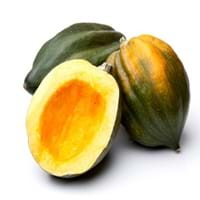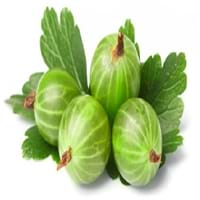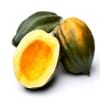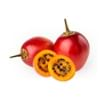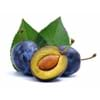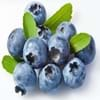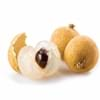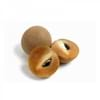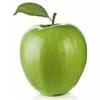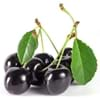Health Benefits
Anti-inflammatory properties, Arthritis treatment, Regulates Blood Sugar
Arthritis prevention, Cancer prevention, Liver health, Scurvy treatment, Ulcer prevention
General Benefits
Boosts immune system, Controls blood sugar levels, Digestive aid
Boosts immune system, Digestive aid, Eye care, Fights against infections, Improves blood circulation, Maintains healthy cholesterol level, Sore throat treatment, Treatment of common cold
Skin Benefits
Nourishes skin, Protects skin from oxidative stress
Anti-aging benefits, Brightens and lightens complexion, Reduces wrinkles, Treatment of acne
Hair Benefits
Prevents hair loss, Promotes longer and healthier hair, Regulates hair growth
Prevents hair loss, Promotes longer and healthier hair, Treatment of dandruff
Allergy Symptoms
Asthma, Red rash, Swelling of mouth, tongue or lips
Constipation, Diarrhea, Drop in blood pressure, Eczema, Facial swelling, Hives, Hoarseness, Itching, Itchy eyes, Nausea, Red rash, Redness of eyes, Runny nose, Sore eyes, Swelling of mouth, tongue or lips, Tingling sensation in mouth, Vomiting
Side Effects
Diarrhoea, Vomiting
Gastric irritation
Best Time to Eat
Along with meal, As a snack in the late afternoon, Don't eat after meal, Eat the fresh ones, avoid mixing with any other foods, don't eat after meal.
Best if taken as a breakfast (or empty stomach), As a snack in the late afternoon, Don't consume at night and before bed, Morning time (before lunch)
Vitamin B5 (Pantothenic Acid)
Vitamin C (Ascorbic Acid)
Vitamin E (Tocopherole)
Not Available
Phytosterol
Not Available
Calories in Fresh Fruit with Peel
Calories in Fresh Fruit without Peel
Not Available
Not Available
Calories in Frozen Form
Not Available
Calories in Dried Form
Not Available
Type
Berry
Berry, Tree fruit
Varieties
Bush Table Queen, Heirloom Table Queen, Festival Hybrid, Early Acorn Hybrid, Table Ace, Ebony and Cream of the Crop
Whinham's Industry, Green Hansa, Clark, Chataqua, Invicta, Keepsake, Lepaa Red, May Duke and Whitesmith
Color
Dark green, Green-yellow, Orange green
Green, Purple, Red, Yellow
Inside Color
Yellow
Yellowish Green
Taste
Sweetish
Astringent
Origin
Central America, North America, Unknown
Africa, Europe, South-West Asia
Soil Type
Well-drained
Loamy, Well-drained
Climatic Conditions
Cold, Sunny
Dry, Warm
Facts about
- It was named as Acorn Squash for its resemblance to a large ribbed acorn.
- It is said that squash was being grown in Mexico as long as 10,000 years ago.
- It was the first food cultivated by native American Indians.
- Traditionally, kids were told that babies were found under gooseberry bushes.
- They are also called 'fayberries' due to an ancient belief that fairies hid in gooseberry bushes to avoid danger.
Top Producer
China
Germany
Other Countries
Egypt, India, Iran, Italy, Mexico, Russia, Turkey, Ukraine, United States of America
Austria, Czech Republic, Denmark, Hungary, Lithuania, Poland, Russia, Ukraine, United Kingdom
Top Importer
Costa Rica
Not Available
Top Exporter
United States of America
Not Available
Botanical Name
Cucurbita Pepo
Ribes uva-crispa
Synonym
Winter Squash
Ribes grossularia
Subkingdom
Tracheobionta
Tracheobionta
Division
Magnoliophyta
Magnoliophyta
Class
Magnoliopsida
Magnoliopsida
Subclass
Dillenhidae
Dillenhidae
Order
Cucurbitales
Saxifragales
Family
Cucurbitaceae
Grossulariaceae
Species
Pepo
R. uva-crispa
Generic Group
Not Available
Saxifrage
Difference Between Acorn squash and Gooseberry
We might think that Acorn squash and Gooseberry are similar with respect to nutritional value and health benefits. But the nutrient content of both fruits is different. Acorn squash and Gooseberry Facts such as their taste, shape, color, and size are also distinct. The difference between Acorn squash and Gooseberry is explained here.
The amount of calories in 100 gm of fresh Acorn squash and Gooseberry with peel is 40.00 kcal and 44.00 kcal and the amount of calories without peel is Not Available and Not Available respectively. Thus, Acorn squash and Gooseberry belong to Low Calorie Fruits and Low Calorie Fruits category.These fruits might or might not differ with respect to their scientific classification. The order of Acorn squash and Gooseberry is Cucurbitales and Saxifragales respectively. Acorn squash belongs to Cucurbitaceae family and Gooseberry belongs to Grossulariaceae family. Acorn squash belongs to Cucurbita genus of Pepo species and Gooseberry belongs to Ribes genus of R. uva-crispa species. Beings plants, both fruits belong to Plantae Kingdom.
